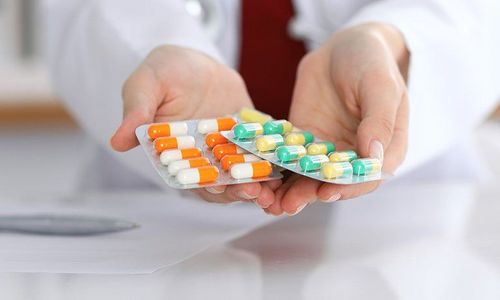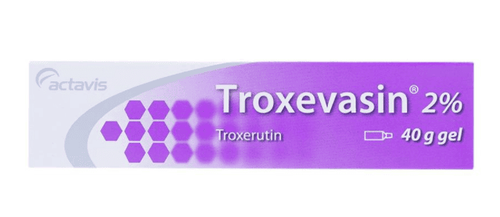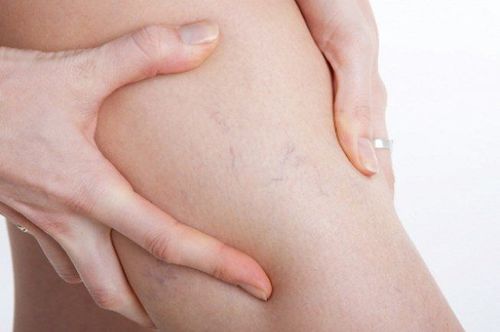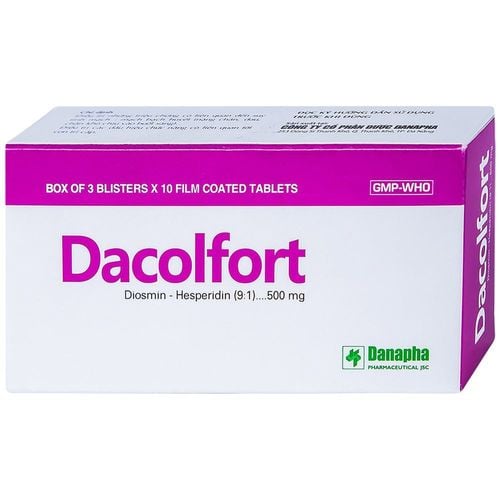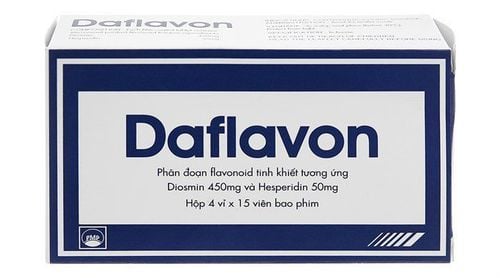This is an automatically translated article.
The article is professionally consulted by Master, Doctor Tran Hong Nhat - Interventional Cardiologist - Cardiovascular Center - Vinmec Central Park International General Hospital.1. What is the method of sclerotherapy?
Sclerotherapy for chronic venous insufficiency of the lower extremities is a simple, inexpensive treatment for clinically symptomatic large and/or small saphenous venous insufficiency. In addition, this is also a very effective method to treat recurrent superficial venous insufficiency, residual superficial varicose veins after surgery, hemangiomas without surgical indications...Principle: When Injecting fibrous agent (in liquid or foam form) into the pathological superficial vein, this substance causes damage to the endothelium and adjacent components of the mesenteric layer, on the one hand causing narrowing of the venous lumen, on the other hand forming blood clots. The vascular occlusion block is impaired. Foam sclerotherapy is a mixture of gas and liquid sclerotherapy, aimed at increasing treatment efficiency and reducing complication rates with a lower volume and concentration of fiber.
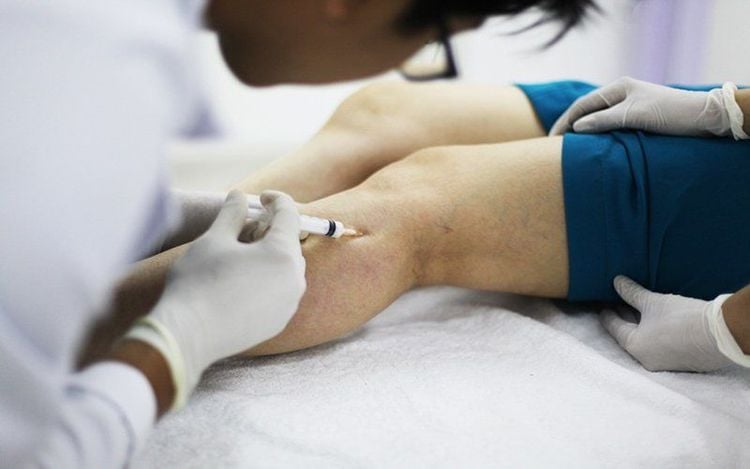
2. Indications and contraindications for intravenous sclerotherapy for which cases?
Sclerotherapy will be considered and indicated for the following cases:Varicose veins of spider veins with a size of less than 1mm under the skin. Superficial reticular varices are 1-3 mm in size and there is no regurgitation at the venous valve on ultrasound. Varicose veins of superficial veins persist after surgery or intervention to treat saphenous venous insufficiency. The patient has a small venous malformation, angioma-type. Patients with recurrent or recurrent superficial venous insufficiency. Some of the contraindications of this method of sclerotherapy are:
Absolute contraindications:
Allergy to sclerosing agents Acute lower extremity deep vein thrombosis Disease coagulopathy Lower extremity artery disease with ABI < 0.8 Pregnancy Known, symptomatic foramen ovale. Relative contraindications:
Presence of known foramen ovale without symptoms History of severe migraine May-Thurner syndrome Klippel-Trenaunay syndrome.
3. To perform sclerotherapy, what do you need to prepare?
Performer: Vascular specialist proficient in Doppler ultrasound and sclerotherapy.Facilities:
● Standard sclerotherapy room with full lighting and sterility conditions.
● Ultrasound machine with 7.5 MHz vascular Doppler transducer.
● Drugs for intravenous sclerotherapy: Aetoxisclerol from 0.25%-3% or Fibrovein 0.35%-3%.
Patient: Get a clear explanation and commitment about the procedure.

4. Steps for sclerotherapy
For sclerotherapy by foaming method:The patient lies in the right or left side position depending on the position of the leg to be injected. The patient lies on the stomach, straightening if the saphenous vein is small. Re-explore the patient with an intravenous ultrasound to determine the appropriate volume and concentration of fibrous foam. Identify and mark the needle puncture site, the direction of insertion of the needle into the vein at 15-20 cm from the loop for the large saphenous vein and 5-10 cm for the minor saphenous vein Antiseptic, venipuncture under ultrasound guidance negative, longitudinal or transverse views can be used through the vein at the puncture site. Check the position of the needle to make sure it is firmly in the vein and then inject the foaming agent into the vein under ultrasound guidance. After injecting the drug, withdraw the needle and use a hand or probe to block the superficial vein loop so that the drug is concentrated and spread into the superficial venous system, avoiding the deep vein causing thrombosis. Ultrasound examination immediately after injection to evaluate the immediate results of the procedure: vasospasm, sclerotherapy foam spread evenly in the venous lumen Disinfect and use sterile cotton to cover the needle puncture site, go Grade II stockings or an elastic bandage on the patient's foot is injected. Cosmetic sclerotherapy
Cosmetic sclerotherapy is applied to spider veins or superficial reticular varicose veins under the skin. The patient lies in a suitable position, so that the vein area to be injected with sclerotherapy is most clearly revealed, most convenient for the doctor to do the procedure. Sclerotherapy has a concentration of 0.125% to 0.5%, usually sclerotherapy in the form of a solution without foaming. After disinfecting the skin at the site of sclerotherapy, the doctor selects the main vein branch in the superficial varicose veins, and injects the sclerosing agent into the vein, so that from this branch the fibrous agent spreads throughout the branches. of varicose veins. After the procedure, the patient may or may not wear socks. 5. Notes and follow-up after the procedure The patient can move, walk and work normally right after the injection, but avoid heavy exercise for at least 2 weeks.
Avoid exposing the injected area to direct sunlight, hot water, and sea water for 2 weeks to limit complications of skin pigmentation disorders. When detecting sores at the injection site, swollen legs, a lot of pain, you need to see a doctor immediately. Master, Doctor Tran Hong Nhat has more than 10 years of experience in examining and treating interventional cardiovascular diseases. The doctor has participated in training courses at home and abroad. The doctor used to be an interventional cardiologist at Hue Central Hospital before working at the Cardiovascular Center - Vinmec Central Park Hospital as it is now.
Please dial HOTLINE for more information or register for an appointment HERE. Download MyVinmec app to make appointments faster and to manage your bookings easily.





